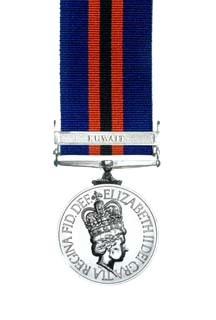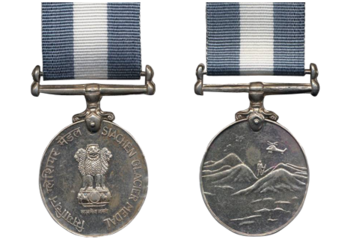
The Garud Commando Force is the special forces unit of the Indian Air Force. It was formed in September 2004 and has a current strength of over 1500 personnel. The unit derives its name from Garuda, a divine bird-like creature of Hindu Mythology.
East Pakistan Air Operations covers activity of the Pakistan Air Force and Pakistan Army Aviation units in erstwhile East Pakistan during the Bangladesh Liberation War and the interdiction, air defense, ground support, and logistics missions flown by the Bangladesh Air Force, Indian Air Force and Indian Navy Aviation wing in support of the Indian Amry and Mukti Bahini in the eastern theater of the Indo-Pakistani conflict of 1971. The Indian Air force helped the Mukti Bahini organize a formation of light aircraft which were manned and serviced by Bengali pilots and technicians who had defected from the Pakistani Air Force. This unit had launched attacks on targets in Bangladesh on 3 December 1971, prior to the start of formal combat between India and Pakistan, although the first of the engagements between the opposing airpowers occurred before the formal declaration of hostilities. Indian Air units commenced operations from December 4, 1971 in the eastern theater, by December 7, Tejgaon airport was put out of operation, grounding the PAF in East Pakistan. Indian units and Kilo Flight continued flying missions over Bangladesh until the unconditional surrender of Pakistan Forces to the joint Bangladesh and Indian Forces command on December 16, 1971.

The New Zealand General Service Medal 1992 (Warlike) is a New Zealand campaign medal, authorised in 1992, for award to New Zealanders who have served in warlike operations for which no separate New Zealand or British Commonwealth campaign medal was issued.

The Iraq Medal was authorised on 23 February 2004. It was a campaign medal issued to members of the British Armed Forces and certain attached personnel, who served between 20 January 2003 and 22 May 2011 on, or in support of, Operation Telic - the designation for British operations during the 2003 Invasion of Iraq and its aftermath.

The General Service Medal, is a campaign medal of the United Kingdom introduced in 1962 to combine the General Service Medal (1918), as awarded to the Army and RAF, and the Naval General Service Medal (1915). The 1962 GSM was awarded until 2007, when it was replaced by the Operational Service Medal. In 2015 the General Service Medal (2008) was introduced.

The Vadamarachchi Operation Medal was a campaign medal presented to all ranks of the regular and volunteer forces of the Military of Sri Lanka that served in the Vadamarachchi Operation, the last major campaign carried out by the Sri Lankan military as part of Eelam War I before the arrival of the Indian Peace Keeping Force in Sri Lanka. The award was also awarded to civilians that aided in the operation.

The history of the Indian Air Force began with its establishment in 1932 and continues up to the present day.

Daulat Beg Oldi, Ladakh, state of Jammu and Kashmir, India is a historic camp site and current military base located on an ancient trade route connecting Ladakh to the Tarim Basin. The Chip Chap River flows just to the south of Daulat Beg Oldi from east to west. Daulat Beg Oldie also has an airstrip at an altitude of 5065 meters, which is the world's highest airstrip.
The Western Air Command (WAC) is the regional command of Indian Air Force headquartered in New Delhi. It is the largest and most important Air Command of the IAF, comprising sixteen Air Force Bases (AFBs), and is responsible for aerial defence of North India. The current Commander is Air Marshal C. Hari Kumar.

The National Defence Medal is a French military decoration. It was created by Charles Hernu, Minister of Defence and established by decree on April 21, 1982. It rewards particularly honourable service rendered by military personnel for their participation in operational activities. The medal has three levels: Gold, Silver and Bronze.
The Armed Forces of India are eligible for a myriad of military decorations. Decorations are awarded for extraordinary bravery and courage, as well as distinguished service during times of war and peace. Service and campaign medals have been awarded throughout the history of India as an independent state.

The Australian Operational Service Medal is a campaign medal established on 22 May 2012 to recognise service by Australian Defence Force (ADF) personnel on designated hazardous operations. It may also be awarded to civilians who serve alongside the ADF on designated operations under specific conditions.

No. 44 Squadron is a unit of the Indian Air Force assigned to Maintenance Command. The Squadron participates in operations involving air, land and air-drop of troops, equipment, supplies, and support or augment special operations forces, when appropriate.

The Operation Vijay Star is a service medal for recognition of Armed Forces personnel and civilians who participated in combat operations during Operation VIJAY in 1999. Those personnel who were mobilised but did not serve in the conflict zone were eligible for the Operation Vijay Medal.

Operations Parakram Medal is a military award of India. It was awarded in recognition of the services of Armed Forces personnel and civilians in Operation Parakram. All ranks of the Indian Armed Forces including Territorial Army, Auxiliary and Reserve Forces, Nursing officers and other members of the Nursing services and other lawfully constituted Armed Forces who were involved in the operation were awarded the medal.
The Sainya Seva Medal is a medal of the Indian Armed Forces. The medal is awarded in recognition of non-operational service under conditions of hardship and severe climate in specified areas.
The International Operational Service Medal is a military decoration awarded by the Government of Ireland to personnel of the Irish Defence Forces who have been deployed on overseas missions by direction of the Government where no other mission medal has been awarded. It was first awarded in October 2016.

The Commemorative Medal for Missions or Operations regarding the operational defense of the territory is a military decoration of Belgium. It was established on 28 March 2018 and is awarded to military and civilian members of the Belgian Armed Forces who participated in operations related to the defense of the Belgian territory or who provided specialized support to such operations.



















